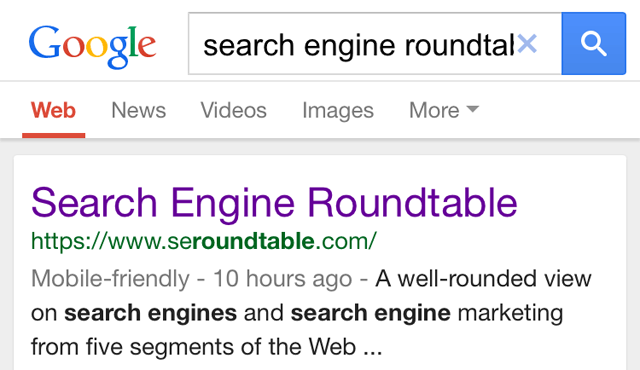Google Adds Mobile-Friendly Labels to Mobile Search Results
By: Rank Media

Dislike visiting websites that are not mobile responsive? Neither does Google, which is why the latest major SEO update posted to the Google Webmaster Central blog was met with universal praise from digital marketers, webmasters, and internet users alike. While the typical Google update causes consternation among webmasters, this latest update reflects the growing mobile trend within the internet marketing industry. Additionally, the core of Search Engine Optimization is about enhancing the user experience by giving targeted users the right content based on specific queries. The overall user experience will be improved with the ability to weed out websites that are not responsive before clicking-through to any pages.
Below is a sample of an organic listing with the mobile-friendly label:
This is quite the significant update from Google and will most definitely impact the mobile SEO landscape. Any sites that have a mobile-friendly label will likely see an increase in traffic and receive a better click-through rate than other mobile organic listings without the aforementioned label. The rollout happened rather quickly, as a simple test on a smartphone device will show that these labels are live. According to Google, webmasters and website developers will need to adhere to the following guidelines to receive the label:
- Avoid software that is not common on mobile devices, such as flash.
- Use text that is readable without zooming.
- Size content to the screen so that users do not have to scroll horizontally or zoom.
- Ensure that there is enough space between links so that the correct one can be easily clicked.
Not only do sites with an unpleasing mobile experiences face potential ranking penalties, Google might experiment with giving mobile-friendly sites a boost in organic rankings according Google’s original post:
“We see these labels as a first step in helping mobile users to have a better mobile web experience. We are also experimenting with using the mobile-friendly criteria as a ranking signal.”
As smartphones continue to evolve into “phablets”, its no surprise that Google is pushing website owners to adopt a more mobile-friendly design. In fact, a recent study from earlier this year showed that users searching from a mobile device are more likely to visit a local store than desktop or tablet users. Mobile commerce also continues to grow, as exhibited by the prediction from analysts that over $100 Billion USD will be spent by the end of the year on mobile devices. Whether you run an ecommerce business, operate a local storefront, or manage a website focused on attracting a B2B audience, it’s time to invest in developing a mobile presence or risk losing traffic to competitors.








 (800) 915 7990
(800) 915 7990
